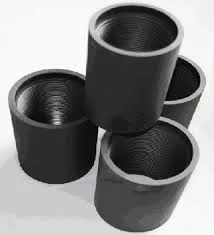- Afrikaans
- Albanian
- Amharic
- Arabic
- Armenian
- Azerbaijani
- Basque
- Belarusian
- Bengali
- Bosnian
- Bulgarian
- Catalan
- Cebuano
- Corsican
- Croatian
- Czech
- Danish
- Dutch
- English
- Esperanto
- Estonian
- Finnish
- French
- Frisian
- Galician
- Georgian
- German
- Greek
- Gujarati
- Haitian Creole
- hausa
- hawaiian
- Hebrew
- Hindi
- Miao
- Hungarian
- Icelandic
- igbo
- Indonesian
- irish
- Italian
- Japanese
- Javanese
- Kannada
- kazakh
- Khmer
- Rwandese
- Korean
- Kurdish
- Kyrgyz
- Lao
- Latin
- Latvian
- Lithuanian
- Luxembourgish
- Macedonian
- Malgashi
- Malay
- Malayalam
- Maltese
- Maori
- Marathi
- Mongolian
- Myanmar
- Nepali
- Norwegian
- Norwegian
- Occitan
- Pashto
- Persian
- Polish
- Portuguese
- Punjabi
- Romanian
- Russian
- Samoan
- Scottish Gaelic
- Serbian
- Sesotho
- Shona
- Sindhi
- Sinhala
- Slovak
- Slovenian
- Somali
- Spanish
- Sundanese
- Swahili
- Swedish
- Tagalog
- Tajik
- Tamil
- Tatar
- Telugu
- Thai
- Turkish
- Turkmen
- Ukrainian
- Urdu
- Uighur
- Uzbek
- Vietnamese
- Welsh
- Bantu
- Yiddish
- Yoruba
- Zulu
Understanding Metric Pipe Couplings for Efficient Installation and Connection Solutions
Understanding Metric Pipe Couplings A Comprehensive Guide
Metric pipe couplings are essential components in various piping systems, serving as connectors that allow for the joining of two sections of pipe. These couplings are fundamental in both residential and industrial applications, providing the necessary flexibility and stability to ensure that fluid transfer is efficient and leak-free. This article delves into the intricacies of metric pipe couplings, exploring their types, applications, and advantages.
What Are Metric Pipe Couplings?
Metric pipe couplings are designed to connect pipes with metric dimensions, which are standard in many countries. They are typically made from materials such as stainless steel, PVC, brass, or galvanized iron, catering to a wide range of applications and environments. The adoption of metric measurements provides a uniformity that simplifies installations and repairs, especially in international projects where metric systems are preferred.
Types of Metric Pipe Couplings
There are several types of metric pipe couplings, each suited for specific applications
1. Threaded Couplings These couplings have internal threads that allow two pipes to be screwed together. They are ideal for systems where disassembly is necessary for maintenance.
2. Socket Weld Couplings Designed for welded pipe systems, socket weld couplings are inserted into the pipes and welded for a strong, permanent connection. They are commonly used in high-pressure applications.
3. Slip-On Couplings Also known as loose couplings, these are simply placed over the ends of two pipes and are secured by welding or bolting. They allow for quick adjustments in piping alignment.
4. Compression Couplings These couplings use a compression mechanism to secure the connection. They are easy to install and do not require any special tools, making them suitable for DIY projects.
5. Flexible Couplings These are designed to accommodate slight misalignments between pipes. They are typically used in situations where vibrations are present or where pipes may shift due to temperature changes.
Applications of Metric Pipe Couplings
Metric pipe couplings find applications across various sectors, including
metric pipe couplings

- Water Supply Systems Because of their reliability and ease of installation, they are widely used in potable water systems, ensuring that water flows smoothly and without leaks.
- Oil and Gas Industry Metric couplings play a crucial role in transporting oil and gas. Their ability to withstand high pressure and corrosive environments makes them a preferred choice in this sector.
- Chemical Processing The chemical industry often requires pipes that can handle aggressive substances. Metric couplings made from resistant materials ensure safety and longevity in these environments.
- HVAC Systems In heating, ventilation, and air conditioning systems, metric couplings are used to connect ductwork and piping, ensuring efficient temperature control throughout a building.
Advantages of Metric Pipe Couplings
The use of metric pipe couplings offers several advantages
1. Standardization With a unified measurement system, installations are more straightforward, reducing the chances of errors during assembly.
2. Versatility Available in various materials and types, metric couplings can meet diverse requirements, from household plumbing to industrial systems.
3. Ease of Use Many metric couplings are designed for quick and easy installation, allowing for faster project completion and less downtime.
4. Enhanced Durability High-quality materials ensure that these couplings can withstand extreme conditions, including high pressure and corrosive substances.
5. Cost-Effectiveness The longevity and reliability of metric pipe couplings often translate into lower maintenance costs and fewer replacements over time.
Conclusion
Metric pipe couplings are indispensable tools in modern piping systems, providing secure and efficient connections across a multitude of applications. Their versatility, ease of installation, and durability make them a preferred choice for engineers and contractors alike. Understanding the various types of metric couplings and their applications can help ensure that you select the right components for your specific needs, ultimately enhancing the effectiveness and longevity of your piping system. As industries continue to evolve, the demand for reliable connectors like metric pipe couplings is set to remain strong, underscoring their importance in both current and future projects.
-
Tubing Pup Joints: Essential Components for Oil and Gas OperationsNewsJul.10,2025
-
Pup Joints: Essential Components for Reliable Drilling OperationsNewsJul.10,2025
-
Pipe Couplings: Connecting Your World EfficientlyNewsJul.10,2025
-
Mastering Oilfield Operations with Quality Tubing and CasingNewsJul.10,2025
-
High-Quality Casing Couplings for Every NeedNewsJul.10,2025
-
Boost Your Drilling Efficiency with Premium Crossover Tools & Seating NipplesNewsJul.10,2025







